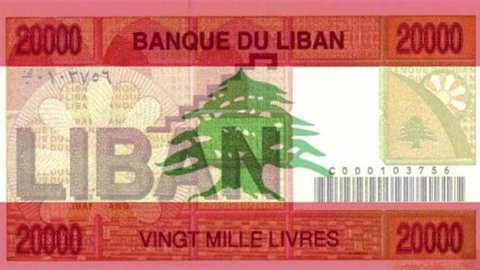As reported by a recent report by Intesa Sanpaolo, last year in Lebanon construction activity and foreign trade recorded a marked slowdown, while services showed greater stability. Internal and regional tensions continue to weigh on the country's economy: also for this year in the WEO of April, the IMF predicts a growth rate of 1% for Lebanon compared to the 2% recorded the previous year. 2015 was characterized by a phase of deflation, with a trend rate of inflation equal to -3,4% last December, while consumer prices decreased on average by 3,8%. This process continued in the first few months of 2016: in March 2016 the trend rate was -3,6%. In this context, with the spread vis-à-vis the dollar wide and real rates particularly high, the Lebanese Central Bank did not follow the US Fed and kept the deposit rate unchanged at 5,95% throughout 2015 and in the first few months of 2016. Since 1999, the Lebanese pound has been kept within a narrow fluctuation band (LBP 1.501 – 1.514 per USD 1) against the US dollar. The peg to the dollar led to an appreciation of the effective nominal exchange rate (over 40% in the last three years, 5% in 2015). In the last two years, however, due to the ongoing deflation process, the real effective exchange rate has remained substantially stable.
In relation to GDP, the public deficit went from 6,1% in 2014 to 7,6% in 2015, where almost a third of outgoings relate to debt service charges, while subsidies to the electricity company EDL absorb a further 10% (down from 15% in 2014). In September 2015, the public debt amounted to 103 billion dollars (136% of GDP), of which 25% in foreign currency. Domestic investors (especially commercial banks, therefore the Central Bank and state-controlled companies) they hold almost all of the public debt in local currency and 80% of that in foreign currency. However, it should be emphasized that commercial banks support their asset purchases with deposits, which for a significant share are from non-residents (Lebanese diaspora and investors from the GCC oil markets). This condition implies risks for the refinancing of public debt and the stock of reserves.
The balance of payments records a substantial current deficit (on average equal to 16% in the decade 2005-2014) due to the commercial part (average deficit 32% of GDP in the period considered), while the "services" and "transfers" accounts show surpluses thanks respectively to income from tourism and remittances from migrant workers, above all in the Gulf countries. The financial account shows a large surplus deriving mainly from foreign currency deposits by banks, demonstrating that, even in these troubled years, Lebanon managed to accumulate substantial foreign exchange reserves. At the end of December 2015, these amounted to 38,4 billion and guaranteed ample coverage of imports (import cover ratio 20,8) and external financial requirements (reserve cover ratio 2,1). Here then is that the three main agencies present a negative outlook on their valuation of the country's sovereign debt in foreign currency, however considered by all to be highly speculative (B- for S&P, B for Fitch and B2 for Moody's).





